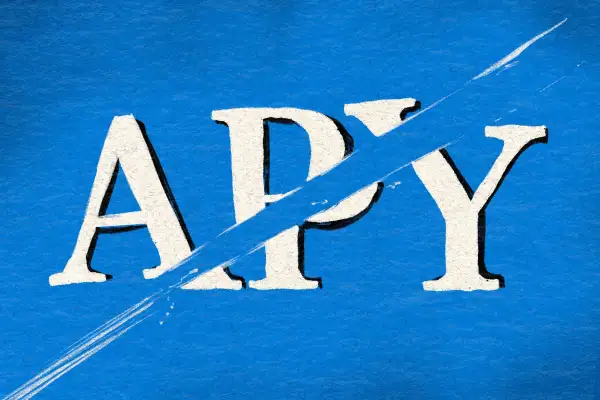Sorry, Savers: Online Banks Are Starting to Slash APYs

The writing is on the wall: Online banks are ready to stop paying you so much to save.
After years of competitive annual percentage yields, or APYs, many financial institutions are starting to wind down their offers due to the economic environment.
Following recent decisions by Ally and Discover to slash the APYs on their high-yield savings accounts to 4.25%, Marcus, the consumer bank of Goldman Sachs, announced it's decreasing the APY on its own high-yield savings accounts from 4.5% to 4.4%. It’s the first time the bank has lowered, rather than raised, this APY since 2021.
“Our current rate places us ahead of the majority of our peers and is eight times the national average,” a Marcus spokesperson told Money in an email. “We will continue to focus on providing value to our customers and growing our Marcus deposits business, which is a priority for the firm.”
What makes the news especially surprising is that these banks have taken the step to cut yields ahead of any firm decision by the Federal Reserve to lower interest rates. What's going on, and what's next?
Is the era of high yields ending?
The sky-high APYs offered on high-yield savings accounts and other savings tools like certificates of deposit (CDs) and money market accounts have largely been the result of the Fed’s inflation-tamping interest rate hikes, which started in 2022. As the central banking system raised rates, it became more expensive for commercial banks to lend each other money. This had a trickle-down effect that slowed the economy and incentivized Americans to save rather than spend.
Facing higher borrowing costs than they'd become accustomed to, banks put more of a priority on deposits. They began competing for customers by increasing the APYs on their savings products, racing each other to the top.
As a result, recent years have given savers some of the highest APYs ever for their savings accounts. High-yield savings accounts in particular saw yields of 4-5%, with some banks offering upwards of 6%. Prior to this run, many online banks' APYs hadn't even broken 2%.
Inflation has abated, though, and last summer, the Fed made its first move toward bringing interest rates back down by pausing its series of rate hikes. At the time, it signaled the first rate cut could potentially come in late 2023 or early 2024. Lower interest rates would mean lower borrowing costs for banks and less motivation for them to offer high APYs to customers.
We still haven't seen that first rate cut — in part because inflation has proven stickier than anticipated — and the Fed continues to remain opaque regarding the timeline.
But savers should be paying close attention.
Clark Bellin, chief investment officer at Bellwether Wealth, says banks are free to change their APYs at any time; Marcus’s move is both reactive to current economic conditions and predictive of future Fed policy. Bellin also says other banks are likely to follow suit in 2024.
“Even though the Federal Reserve may be delaying its rate cuts due to sticky inflation, we expect banks to start reducing rates on high yield savings accounts over the next six to nine months, as the Fed is still expected to reduce interest rates at some point this year,” he says.
A boon for fixed-rate accounts
It’s worth noting that, even lowered, these yields still outpace those of brick-and-mortar banks. Nationwide, the average APY for savings accounts is 0.47%.
In addition, many banks have already slashed the APYs on their other savings products, most notably CDs. At the end of November 2023, as CDValet.com's Bryan Johnson told Marketwatch, Americans had 3,900 CDs to choose from that offered APYs over 5%. By last month, that number had shrunk to just 3,000.
Still, Bellin says that putting money into fixed-rate accounts could be a smart move for savers who want added peace of mind. Unlike high-yield savings accounts, CDs are fixed-rate savings accounts, meaning depositors have that rate locked in until their term ends.
High-yield savings account rates can — and will — change at any time.
“Banks are constantly monitoring market conditions, and consumers should expect the rates on these savings accounts to fluctuate,” Bellin adds.
More from Money:
Biden's New Student Loan Forgiveness Plan Could Cancel Debt for 30 Million

